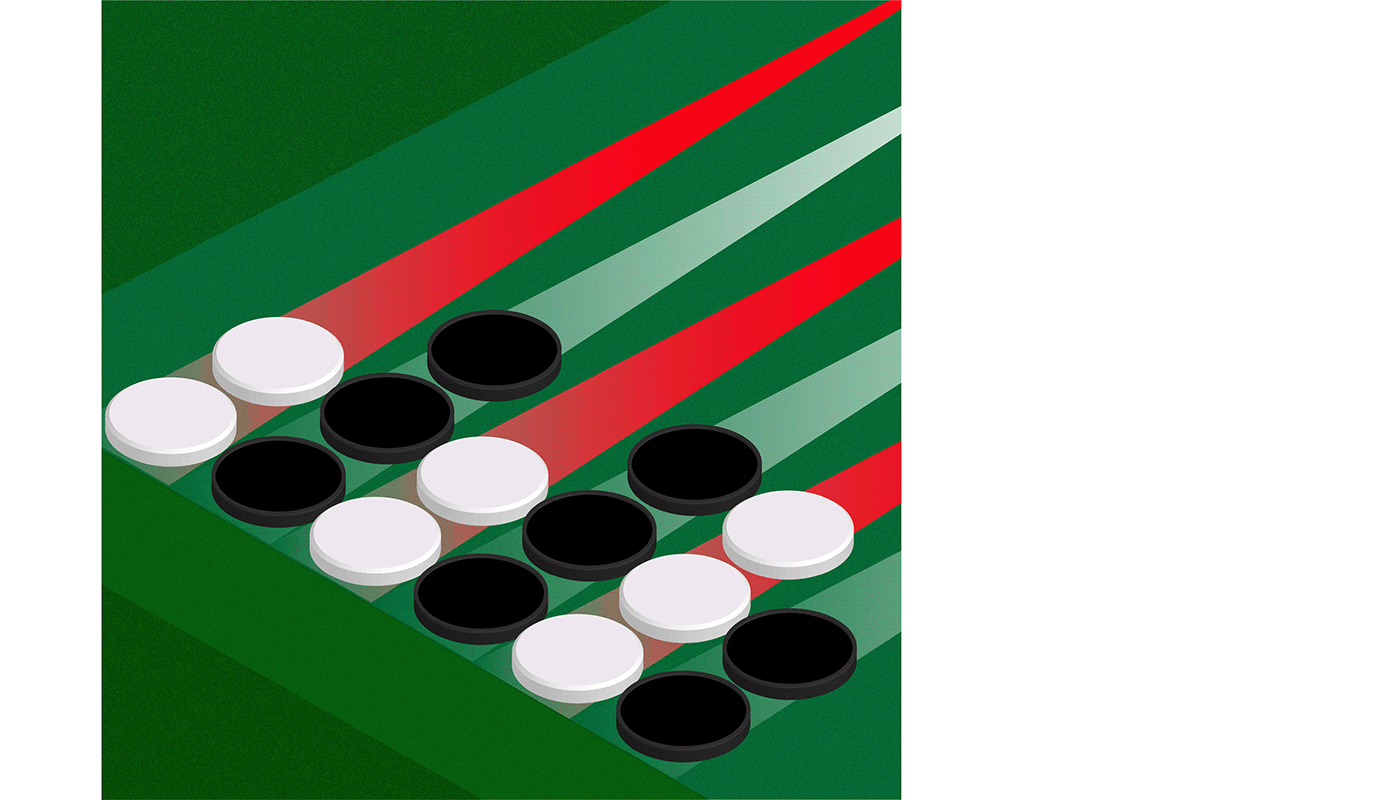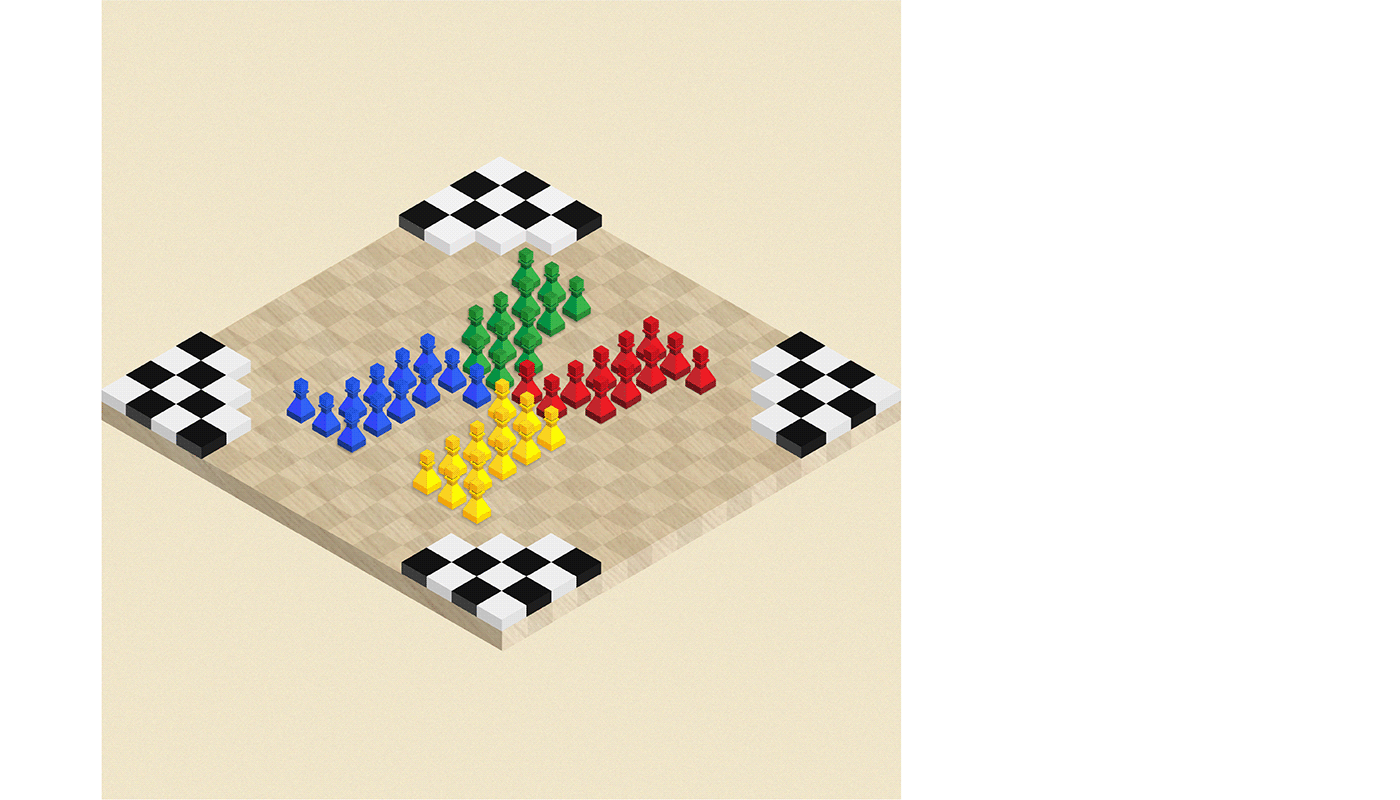36DaysofType
In 2019, I participated in 36 Days of Type. I decided to go ahead with tabletop games. Tabletop games are games that are normally played on a table or other such flat surfaces, such as board games, card games, dice games, miniature war games or tile-based games.
A for Azul
Azul is an abstract board game designed by Michael Kiesling and released by Plan B Games in 2017. Based on Portuguese tiles called azulejos, in Azul players collect sets of similarly colored tiles which they place on their player board. When a row is filled, one of the tiles is moved into a square pattern on the right side of the player board, where it garners points depending on where it is placed in relation to other tiles on the board.

B for Backgammon
Backgammon is a two player game where each player has fifteen pieces (checkers or men) that move between twenty-four triangles (points) according to the roll of two dice. The objective of the game is to be first to bear off, i.e. move all fifteen checkers off the board. Backgammon is a member of the tables family, one of the oldest classes of board games.

C for Carrom
Carrom (also spelled carom) is a cue sport-based tabletop game of Indian origin.
The objective of play is to use a striker disk with a flick of the finger to make contact with and move lighter object disks called carrom men, which are thus propelled into one of four corner pockets. The striker and carrom men are analogous to the cue ball and object ball in cue sports, respectively.

D for Darts
Darts is a sport in which small missiles are thrown at a circular target ("dartboard") fixed to a wall. It generally refers to a game in which one player at a time throws three darts per turn. The throwing player must stand so that no portion of his/her feet extends past the leading edge of the oche, but may stand on any other portion and/or lean forward over it if desired. A game of darts is generally contested between two players, who take turns. The most common objective is to reduce a fixed score, commonly 301 or 501, to zero ("checking out”).

E for El Grande
El Grande is a German-style board game for 2-5 players, designed by Wolfgang Kramer and Richard Ulrich. The game board represents renaissance-era Spain where the nobility fight for control of the nine regions. Each player starts the game with a hand of identical cards (numbered 1-13) at the beginning of the game. These cards are used to bid for turn order. The person who plays the highest card chooses their action card first, etc., but each player may use each card only once in a given game.

F for Flinch
Flinch is a card game that was invented in 1901 by A.J. Patterson. Flinch is a card game that is based on stockpiling. The object of the game is to empty your Flinch pile. Next the dealer deals each player a hand of 5 cards. The rest of the cards, called the stack, are dealt out in groups of 5, when a player's hand becomes empty during play.

G for Go
Go is an adversarial abstract strategy game with the objective of surrounding a larger total area of the board with one's stones than the opponent. As the game progresses, the players position stones on the board to map out formations and potential territories.

H for Halma
This strategy board game is played by two or four players seated at opposing corners of the board. The game is won by being first to transfer all of one's pieces from one's own camp into the camp in the opposing corner.

I for Imhotep
In Imhotep, the players become builders in Egypt who want to emulate the first and best-known architect there, namely Imhotep. Over six rounds, they move wooden stones by boat to create five seminal monuments, and on a turn, a player chooses one of four actions: Procure new stones, load stones on a boat, bring a boat to a monument, or play an action card.

J for Jenga
Jenga is played with 54 wooden blocks; each block is 3 times as long as it is wide, and slightly smaller in height than in width. The blocks are stacked in a tower formation. Once the tower is built, the person who built the tower moves first. Moving in Jenga consists of taking one and only one block from any story except the completed top story of the tower at the time of the turn, and placing it on the topmost story in order to complete it.

K for Kalah
Kalah, also called Kalaha or Mancala, is a game in the mancala family. The game provides a Kalah board and a number of seeds or counters. The board has 6 small pits, called houses, on each side; and a big pit, called an end zone, at each end. The object of the game is to capture more seeds than one's opponent.

L for Ludo
Ludo (/ˈljuːdoʊ/; from Latin ludo, meaning 'I play') is a strategy board game for two to four players, in which the players race their four tokens from start to finish according to the rolls of a single die.

N for Nyout
Yut Nori, also known as Yunnori, Nyout, and Yoot, is a traditional board game played in Korea, especially during

P for Pentominoes
Pentomino tiling puzzles and games are popular in recreational mathematics. One of the games is played on an 8×8 grid by two or three players. Players take turns in placing pentominoes on the board so that they do not overlap with existing tiles and no tile is used more than once. The objective is to be the last player to place a tile on the board. This version of Pentominoes is called "Golomb's Game".

Iterations


















